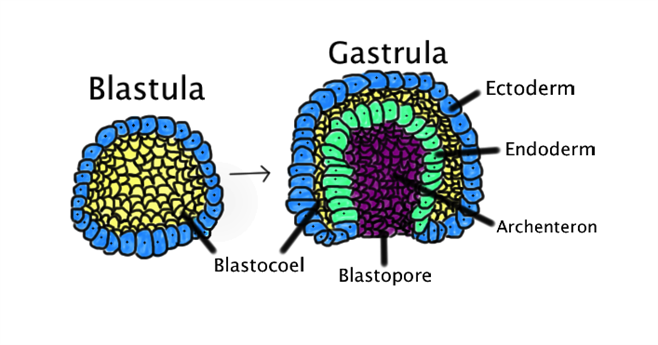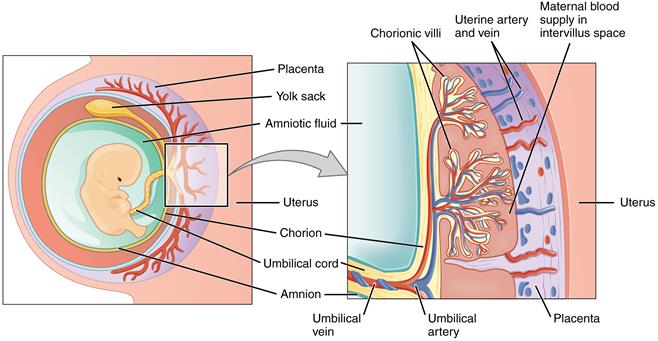
PUMPA - SMART LEARNING
எங்கள் ஆசிரியர்களுடன் 1-ஆன்-1 ஆலோசனை நேரத்தைப் பெறுங்கள். டாப்பர் ஆவதற்கு நாங்கள் பயிற்சி அளிப்போம்
Book Free DemoGastrulation
The blastocyst is transformed into the gastrula.
The transformation of blastula into gastrula with primary germ layers (ectoderm, mesoderm and endoderm) by rearranging the cells is called gastrulation.
The single-layered blastula is converted to a multi-layered gastrula. Gastrulation involves the movement of cells inside the embryo that helps attain a new shape and morphology of the embryo. These movements are called morphogenetic movements.
The three germ layers, namely ectoderm, mesoderm and endoderm, are formed through morphogenetic movements. This process takes place after the process of implantation. The germ layers are the layers of partially differentiated cells.
Gastrula undergoes further cell division and cell differentiation, leading to the development of different organs in the embryo. Each of the germ layers gives rise to specific tissues and organs.

From Blastula to Gastrula
Organogenesis:
The establishment of the germ layers namely initiates the final phase of embryonic development.
During organogenesis, the various organs of the foetus are established from the different germ layers attaining a functional state.
The stage of gestation where the formation of different organs takes place in the embryo is called organogenesis.

Differentiation of endoderm, mesoderm and ectoderm to different cells
During organogenesis, the embryo also gets attached to the uterine wall. This process is called implantation. At this stage, the embryo is called the foetus.
Formation of the placenta:
The placenta is a disc-shaped structure that attaches the uterine wall and the developing embryo. It serves as a temporary intimate connection between the foetus and the uterine wall to exchange certain materials.
The placenta contains villi on the embryo's side of the tissue. The villi are surrounded by blood spaces on the mother's side. This provides a large surface area for glucose and oxygen to flow from the mother to the embryo. It also allows the exchange of food materials, diffusion of oxygen, elimination of carbon dioxide and excretion of nitrogenous wastes.
The placenta is connected to the embryo through a cord containing blood vessels called the umbilical cord. The umbilical cord helps in the transport of substances to and from the embryo.

Placenta
The functions of the placenta include:
1. Nutrition - The nutrition is passed from maternal blood to the foetus through the placenta.
2. Respiration - \(O_2\) passes from the maternal blood to the foetus through the placenta, and \(CO_2\) passes in the reverse direction.
3. Excretion - The excretory products from the foetus diffuses into the maternal blood through the placenta, which the mother excretes.
4. Acts as a barrier and provides protection - Placenta acts as a barrier and allows only specific materials to pass into the foetal blood.
5. Has endocrine functions - Placenta secretes hormones like oestrogen, progesterone, human chorionic gonadotropin and relaxin.
6. Acts as storage of glycogen.
Reference:
https://upload.wikimedia.org/wikipedia/commons/d/d9/Blastula.png
https://upload.wikimedia.org/wikipedia/commons/5/52/Germ_layers.jpg